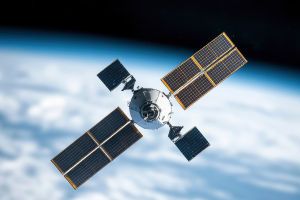The age of the universe is a fundamental question that has intrigued scientists and philosophers for centuries.
Today, thanks to remarkable advancements in observational astronomy, physics, and cosmology, humanity has developed several robust scientific methods to determine the universe’s age with impressive precision.
The Cosmic Microwave Background: The Universe’s Oldest Light
One of the most pivotal breakthroughs in measuring the universe's age comes from studying the cosmic microwave background (CMB) radiation. Discovered accidentally in 1965, the CMB is a faint glow of microwaves permeating space, regarded as the afterglow of the BigBang itself. This radiation originated about 380,000 years after the Big Bang when the universe cooled enough for atoms to form and photons to travel freely.
Satellite missions such as NASA’s Wilkinson Microwave Anisotropy Probe (WMAP) and the European Space Agency’s Planck spacecraft have provided highly detailed maps of the CMB’s temperature fluctuations. These fluctuations encode information about the universe's composition, geometry, and expansion history. By fitting cosmological models to this data, scientists can infer the time elapsed since the BigBang. Current estimates place the universe's age at approximately 13.8 billion years, with a margin of error as small as 0.02 billion years.
Stellar Age Dating: Timeless Cosmic Clocks
Another crucial technique involves studying the oldest known stars and stellar populations, particularly globular clusters—dense collections of ancient stars orbiting galaxies. These stars serve as “cosmic chronometers” since their ages reflect the minimum age of the universe itself. Scientists use stellar evolution models that analyze how stars of various masses change over time to estimate the ages of these clusters accurately.
The oldest globular clusters in the Milky Way have been dated to be around 12 to 13 billion years old, consistent with the age derived from CMB observations. This concordance between independent measurements strengthens confidence in the cosmic age estimates and the BigBang model as a robust framework.
The Hubble Constant and Universe’s Expansion Rate
The universe has been expanding since its inception, a fact first observed in the 1920s by Edwin Hubble. The current rate of expansion, known as the Hubble constant (H₀), directly influences age estimates. By measuring the redshift—the stretching of light to longer wavelengths—as galaxies move away, astronomers can calculate how quickly space is expanding.
Precise measurements involve observing distant objects like Type Ia supernovae, which function as “standard candles” due to their consistent intrinsic brightness. Modern telescopes, including the Hubble Space Telescope, have refined H₀ estimates, although some tension remains between values derived from early universe data (e.g., CMB) and those from the local universe. Despite these differences, the consensus places the universe’s age near 13.8 billion years.
Radioactive Dating and Element Abundances
Complementing cosmological observations, radioactive dating techniques use the decay of heavy elements such as uranium and thorium found in the oldest stars and meteorites. These natural “clocks” provide lower bounds on the age of the universe since these elements were produced in earlier generations of stars.
Dr. Charles Bennett, lead scientist on the WMAP mission, explains: “The age of the universe is derived not just from a single measurement but from a coherent picture that emerges by combining cosmic microwave background radiation observations with measurements of the expansion rate and observations of ancient stars".
Similarly, Dr. Wendy Freedman, an expert in cosmic distance measurements, observes: “Measuring the universe’s age requires cross-verifying different independent methods. The remarkable agreement among these different techniques lends credibility to our current cosmological models and the estimated age around 13.8 billion years".
The age of the universe is well established through a synergy of approaches encompassing cosmic microwave background studies, stellar evolution models, measurements of cosmic expansion, and radioactive dating of ancient elements. These independent methods converge on an age of approximately 13.8 billion years, with growing precision thanks to technological progress and refined cosmological theories.


